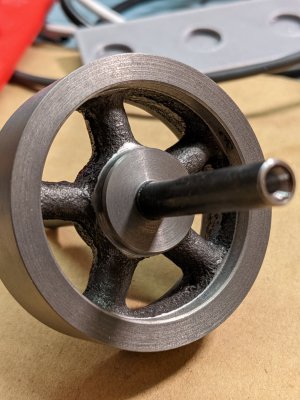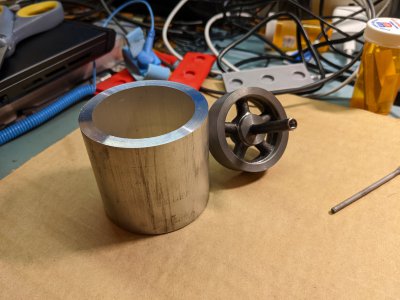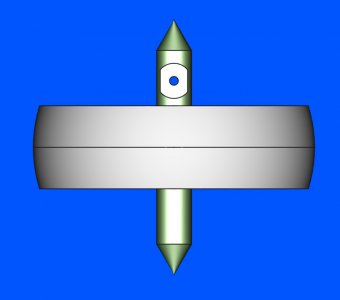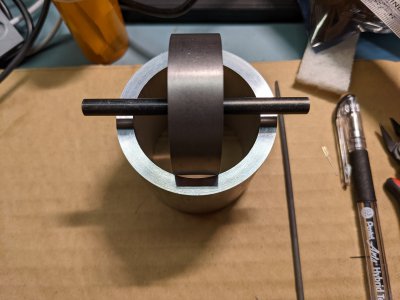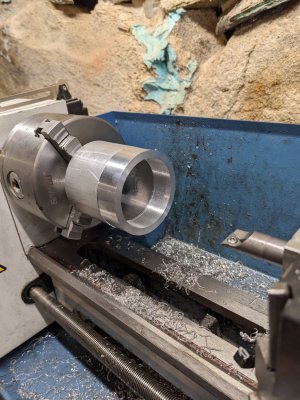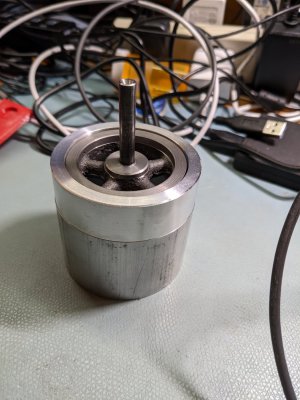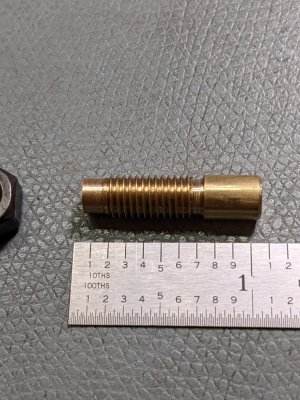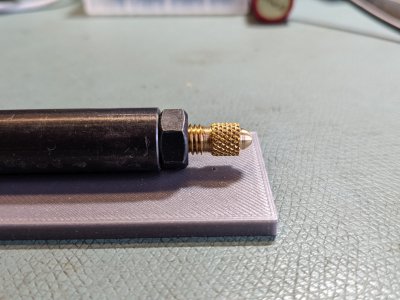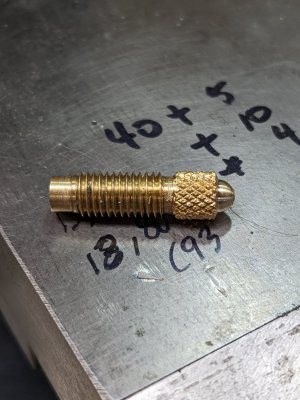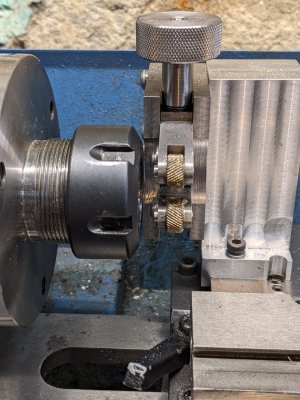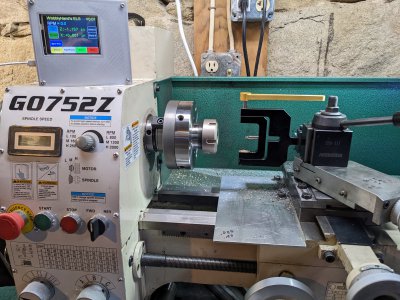- Joined
- Dec 18, 2019
- Messages
- 6,464
Thought I'd make a gyroscope for my grandson. Perhaps the first one will be for me, if it doesn't turn out well... Bought some 2" cast iron flywheels from Martin's Castings. After watching Clickspring's video on a gyroscope, I thought it might be possible for me to make one, although perhaps not as nice. Made a FreeCAD model just to give me some ideas of size and whatnot.
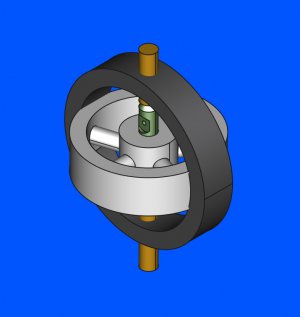
Ordered and received some 2.5" OD, 2" ID aluminum tubing for the cage. Found some 1144 for the shaft, and I hope I have some small diameter brass floating around for the "bearings". When I received the flywheel it looked a little off. Hope I can machine it true.
Today spent some time in the shop trying to grasp the flywheel. I found a face that was sort of flat and used that as a sort of reference. I then faced off the boss where the cast in letters were. Next was the outer face. Then I flipped it around and faced off the other side. Looking at everything it was clear that the wheel was pretty lumpy. I decided to put in the four jaw chuck and attempt to indicate on the inner hub. The hub was bumpy but I sort of got it somewhat dialed in. I then faced off the hub and rim again. Next I drilled the hub with a 7/32" drill and then a 15/64" drill and reamed it to 0.2500". The 1144 was 0.2495" and slipped into the hole. I then applied some cyanoacrilate glue. It didn't seem to want to set, so I lightly dusted the joint with some baking soda. This set the super glue.
I then turned the rim, which took a while, mostly because I wasn't sure how deep of a cut I could take with the glued shaft.
This is what I have so far.
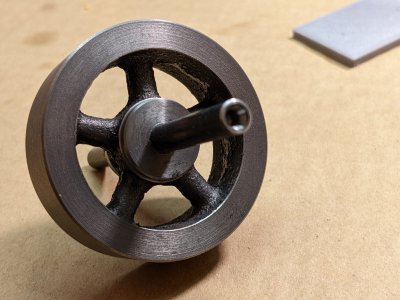
It's not easy cleaning up the spokes. I can see that will take a while, at least with my low end needle files. And cast iron is messy. Think I will end up painting the spokes as they are not that attractive.
It's a start.

Ordered and received some 2.5" OD, 2" ID aluminum tubing for the cage. Found some 1144 for the shaft, and I hope I have some small diameter brass floating around for the "bearings". When I received the flywheel it looked a little off. Hope I can machine it true.
Today spent some time in the shop trying to grasp the flywheel. I found a face that was sort of flat and used that as a sort of reference. I then faced off the boss where the cast in letters were. Next was the outer face. Then I flipped it around and faced off the other side. Looking at everything it was clear that the wheel was pretty lumpy. I decided to put in the four jaw chuck and attempt to indicate on the inner hub. The hub was bumpy but I sort of got it somewhat dialed in. I then faced off the hub and rim again. Next I drilled the hub with a 7/32" drill and then a 15/64" drill and reamed it to 0.2500". The 1144 was 0.2495" and slipped into the hole. I then applied some cyanoacrilate glue. It didn't seem to want to set, so I lightly dusted the joint with some baking soda. This set the super glue.
I then turned the rim, which took a while, mostly because I wasn't sure how deep of a cut I could take with the glued shaft.
This is what I have so far.

It's not easy cleaning up the spokes. I can see that will take a while, at least with my low end needle files. And cast iron is messy. Think I will end up painting the spokes as they are not that attractive.
It's a start.


